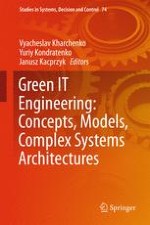This volume provides a comprehensive state of the art overview of a series of advanced trends and concepts that have recently been proposed in the area of green information technologies engineering as well as of design and development methodologies for models and complex systems architectures and their intelligent components. The contributions included in the volume have their roots in the authors’ presentations, and vivid discussions that have followed the presentations, at a series of workshop and seminars held within the international TEMPUS-project GreenCo project in United Kingdom, Italy, Portugal, Sweden and the Ukraine, during 2013-2015 and at the 1st - 5th Workshops on Green and Safe Computing (GreenSCom) held in Russia, Slovakia and the Ukraine. The book presents a systematic exposition of research on principles, models, components and complex systems and a description of industry- and society-oriented aspects of the green IT engineering. A chapter-oriented structure has been adopted for this book following a “vertical view” of the green IT, from hardware (CPU and FPGA) and software components to complex industrial systems. The 15 chapters of the book are grouped into five sections: (1) Methodology and Principles of Green IT Engineering for Complex Systems, (2) Green Components and Programmable Systems, (3) Green Internet Computing, Cloud and Communication Systems, (4) Modeling and Assessment of Green Computer Systems and Infrastructures, and (5) Gree
